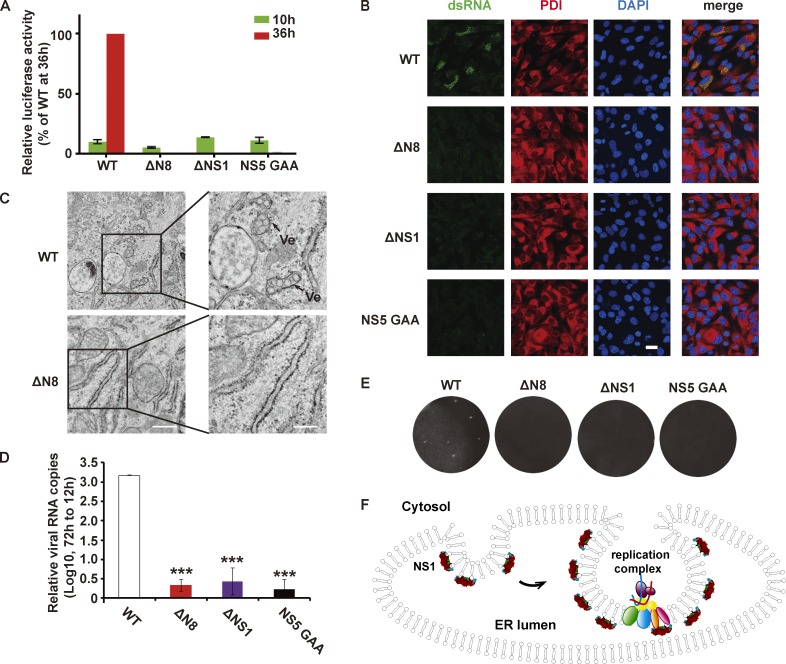Figure 6.
ZIKV NS1 is essential for viral replication relying on ER remodeling. (A) Luciferase activity of the ZIKV replicon. Renilla luciferase activity was measured at 10 h and 36 h after transfection of cells with WT or mutated ZIKV replicon RNA. (B) dsRNA intermediate staining in replicon-transfected cells. WT or mutated replicon-transfected BHK-21 cells were stained with J2 antibody (green, dsRNA specific antibody) and anti-PDI antibody (red, ER marker). Scale bar, 20 µm. (C) EM images showing the ER structure in ZIKV replicon-transfected BHK-21 cells. Right panel: High-magnification image of the indicated area. Scale bars, 500 nm (left panel), 250 nm (right panel). (D) rZIKV production by WT or mutated infectious ZIKV RNA transcript. Fold change of the viral RNA copy number in the culture medium at 72 h relative to that at 12 h after transfection of cells with WT or mutated infectious ZIKV RNA transcript. The data are presented as the mean ± SEM. The P values are obtained from a two-tailed t test. ***, P < 0.001. (E) Plaque assay to examine the infectivity of rZIKV. Vero cells were infected with equal amounts of 10-fold diluted WT or mutated rZIKV. A plaque assay was performed on day 5 after infection. (F) Schematic diagram of the ZIKV NS1-induced replication compartment formed by ER remodeling. ER lumen-localized ZIKV NS1 induces ER invagination through hydrophobic insertion into the inner leaflet of the ER membrane. Then, the invaginated vesicles become a platform for replication complex assembly and RNA synthesis.

